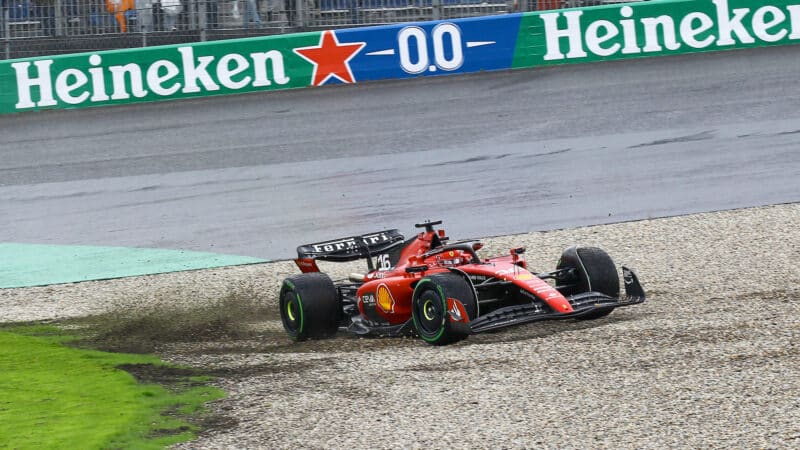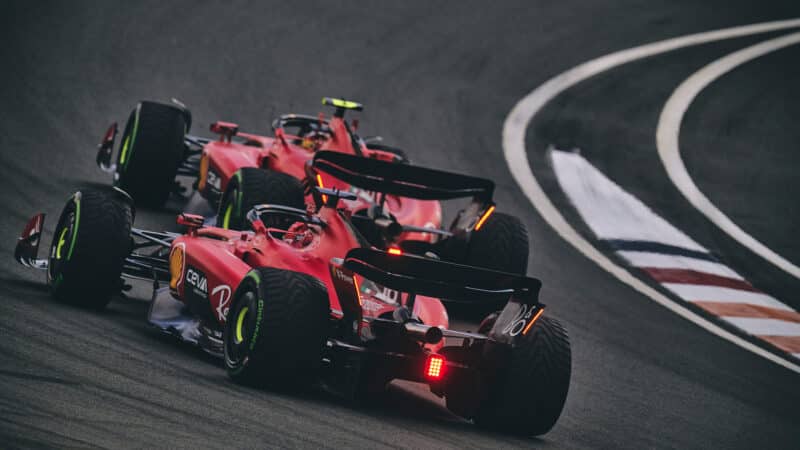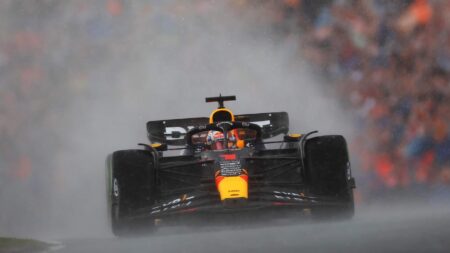“The other point is that the car is consistent during the race weekend in terms of behaviour, but sometimes this behaviour changes from track to track. In Hungary, we had a difficult time, in Belgium the performance was back. Sometimes this happens. But during a weekend, if the car is consistent we can work on it.”
At the moment, that seems to be a pretty big ‘if.’ At Zandvoort Ferrari sacrificed much of Friday to medium compound runs aimed at ’24 developments, Leclerc finishing up P16. Reserve driver Robert Shwartzman had a run in Sainz’s car in FP1 and reported that the rear end was “super unstable.”
Leclerc had picked up an ear infection and drove the 900-odd miles from home in Monaco to Zandvoort rather than fly, so maybe some remnants of an inner ear / balance issue remained, but the SF23’s foibles were a much likelier explanation for Leclerc stacking the car in Q3 when he had a snap in Turn 9. Post-session, he said he had “zero idea” how the car would behave in the corners.
“Since FP1, we’ve been struggling in Turns 1, 9 and 10,” he elaborated. “We’ve changed the car completely, and honestly there’s not much that helps us in these three corners. “Turns 9 and 10 you go in, you are releasing the brakes, there’s absolutely no grip for whatever reason and then you’re just trusting the car gripping again on the exit. Which it didn’t on that lap, and I ended up in the wall.”
It wasn’t the first time this season. The Ferrari is sensitive to wind and, in Miami, Leclerc crashed at T6/7 in practice and did it again in qualifying, although he accepted full responsibility for pushing too hard in a tricky car.
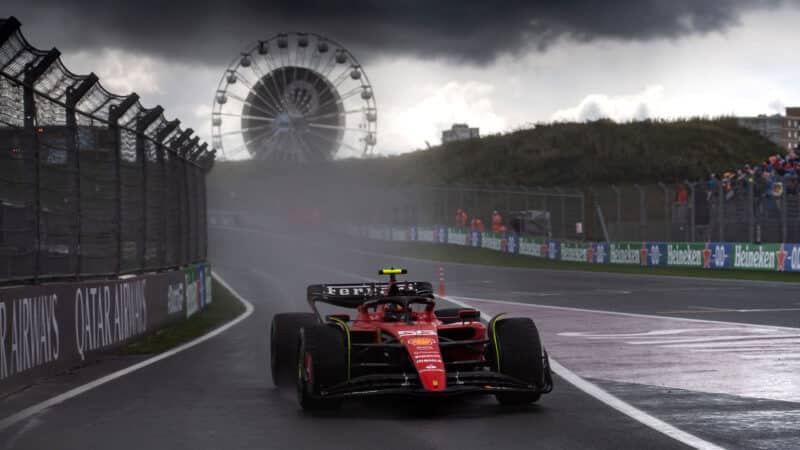
Storm clouds over Sainz, who says this year’s car is unpredictable
Ferrari
All a bit of a puzzle considering that early season last year Leclerc spoke of a very driveable, predictable car, the Achilles heel being lack of straightline speed relative to Red Bull. He only missed Verstappen’s Zandvoort pole by a couple of hundredths last year and the Ferraris started the race second and third.
So, what’s changed? That was all before the introduction of the FIA’s Technical Directive 39, designed to control the porpoising / bouncing affecting the new ground effect cars. Ferrari was never as competitive afterwards.
Then, an increase in floor / diffuser height in ’23 made it more difficult to generate underbody downforce and, if anything, seems to have affected Red Bull less and given Ferrari even more headaches. While Red Bull is going down the enviable path of polishing a gem for ’24, Ferraris is going back to the drawing board.
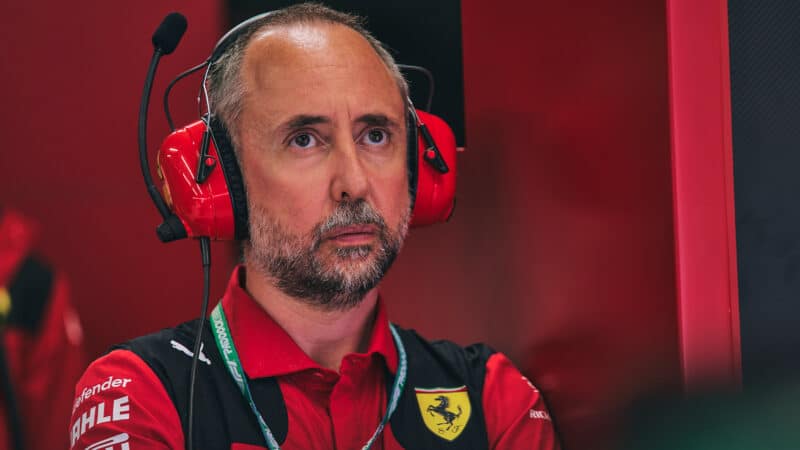
Enrico Cardile, Ferrari’s head of chassis, insists the team knows where it went wrong this year
Ferrari
Speaking last weekend, Cardile admitted, “Developing this year’s car we realised that some architectural choices we made were not right. It was constraining the development too much. From there, next year’s car will not be an evolution of this year’s like this year’s car has been compared to last year. It will be a brand-new car – a different chassis with a different design, a different rear end.”
